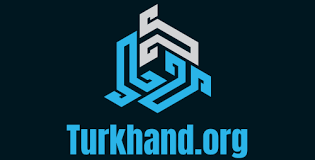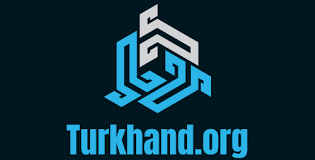Smart texture calibration is transforming how designers and manufacturers achieve surface precision in modern production. The process focuses on adjusting and fine-tuning the microscopic texture details of printed surfaces, creating smoother and more accurate finishes.
In Dubai, where architectural and industrial design demand high visual quality, smart texture calibration has become an essential part of additive manufacturing. It ensures that surfaces not only look refined but also perform better in various environmental conditions.
Understanding Smart Texture Calibration
Smart texture calibration is the process of aligning digital design data with the actual print output through intelligent monitoring and adaptive correction systems. It uses algorithms, sensors, and machine learning to analyze surface layers during the printing process.
Any detected deviation from the intended texture pattern is instantly corrected through system recalibration. This allows for consistent precision even when working with complex geometries or materials sensitive to environmental changes.
This calibration system works through multiple feedback loops. Cameras and sensors capture high-resolution images of printed layers in real time. The data is compared with the original digital model, and the printer automatically adjusts extrusion rates, temperature, and layer thickness to maintain accuracy. The result is a surface that meets exact design expectations without requiring heavy post-processing.
Enhancing Surface Precision Through Real-Time Adjustments
The main advantage of smart texture calibration is its ability to make continuous real-time adjustments during printing. Traditional 3D printing often faced issues with minor distortions caused by heat fluctuations or inconsistent material flow. These small imperfections could affect the texture and overall appearance of the finished model. With smart calibration, the printer’s sensors immediately detect these variations and make automatic corrections, ensuring a uniform and finely detailed surface.
This approach is especially beneficial for projects requiring exact replication of tactile patterns or micro details. For example, architectural models with stone, marble, or wood-like textures can now be produced with lifelike accuracy. This technology reduces the gap between the digital model and the physical object, bringing a new level of craftsmanship to design production.
Integration with Artificial Intelligence
Artificial intelligence plays a vital role in improving texture precision. AI algorithms analyze vast amounts of surface data collected during each print cycle. By learning from previous prints, the system becomes smarter and faster at identifying patterns that might lead to texture inconsistencies. Over time, it develops predictive capabilities, enabling it to anticipate potential issues before they occur.
In industrial applications, this predictive control is essential. It ensures every product maintains identical surface quality across multiple production runs. For Dubai’s high-end architecture and product design industries, where aesthetic uniformity is crucial, AI-powered texture calibration provides both efficiency and reliability.
Material-Specific Calibration Techniques
Different materials require unique calibration methods to maintain surface precision. For instance, metals, polymers, and composites each react differently to temperature and pressure. Smart texture calibration systems adapt to these variations by using material-specific databases that guide real-time printer adjustments.
This is particularly valuable in 3D printing Dubai projects involving sustainable materials or hybrid composites. Since Dubai often emphasizes innovation and sustainability, these adaptive techniques help designers work with new material blends while preserving texture integrity. The system can modify print parameters based on how the material behaves during extrusion, ensuring smooth layers and consistent finishes.
Environmental Influence and Precision Control
Dubai’s climate can influence printing outcomes due to temperature and humidity changes. Smart texture calibration addresses this challenge by incorporating environmental sensors that monitor the surrounding conditions. If the air temperature or humidity affects material flow, the printer compensates automatically by adjusting cooling rates or extrusion speeds.
This environmental responsiveness ensures that prints maintain consistent surface quality regardless of external conditions. It also reduces waste caused by print failures, making the process more sustainable. The result is a balance between advanced technology and environmental adaptability, supporting Dubai’s vision for sustainable and intelligent manufacturing systems.
Impact on Post-Processing and Finishing
Another major benefit of smart texture calibration is the reduction of post-processing work. Previously, achieving a smooth finish often required sanding, polishing, or chemical treatment. With smart calibration, much of this manual effort is eliminated. The printer achieves near-perfect texture alignment during the printing stage, saving both time and cost.
This also benefits industries focused on rapid prototyping. Designers can produce finished parts that require minimal refinement, accelerating the development cycle. In architecture, for example, model makers can achieve polished surfaces directly from the printer, ready for client presentations.
Application in Design and Architecture
Smart texture calibration supports Dubai’s growing focus on design innovation and precision manufacturing. Architectural models, interior elements, and product prototypes all benefit from this advanced control. It allows designers to explore complex textures inspired by natural materials or cultural motifs while ensuring consistent quality across large projects.
3D printing Dubai firms often combine smart calibration with digital design platforms to create seamless workflows. From concept to final model, every surface detail is maintained with high fidelity. This integration has made Dubai a hub for advanced design and fabrication, where technology meets creativity.
Future Outlook
The future of smart texture calibration points toward even greater automation and intelligence. Researchers are exploring ways to connect calibration systems with cloud-based design databases, allowing real-time learning across multiple printers. This could create a network of self-improving systems capable of achieving ultra-precise surfaces on any scale.
As 3D printing continues to evolve, the role of smart texture calibration will expand beyond surface control. It may soon influence structural integrity, energy efficiency, and environmental adaptability in printed designs. For Dubai’s innovation-driven industries, this evolution represents a major step toward a new era of intelligent fabrication.
Conclusion
Smart texture calibration has become a defining element of modern manufacturing precision. Through real-time monitoring, AI integration, and adaptive control, it ensures every printed surface aligns perfectly with design intent.
By minimizing errors and reducing post-processing, it enhances efficiency and sustainability. As this technology continues to evolve, it will keep shaping the standards of surface quality and craftsmanship in 3D printing Dubai, setting a global example for innovation and precision engineering.



